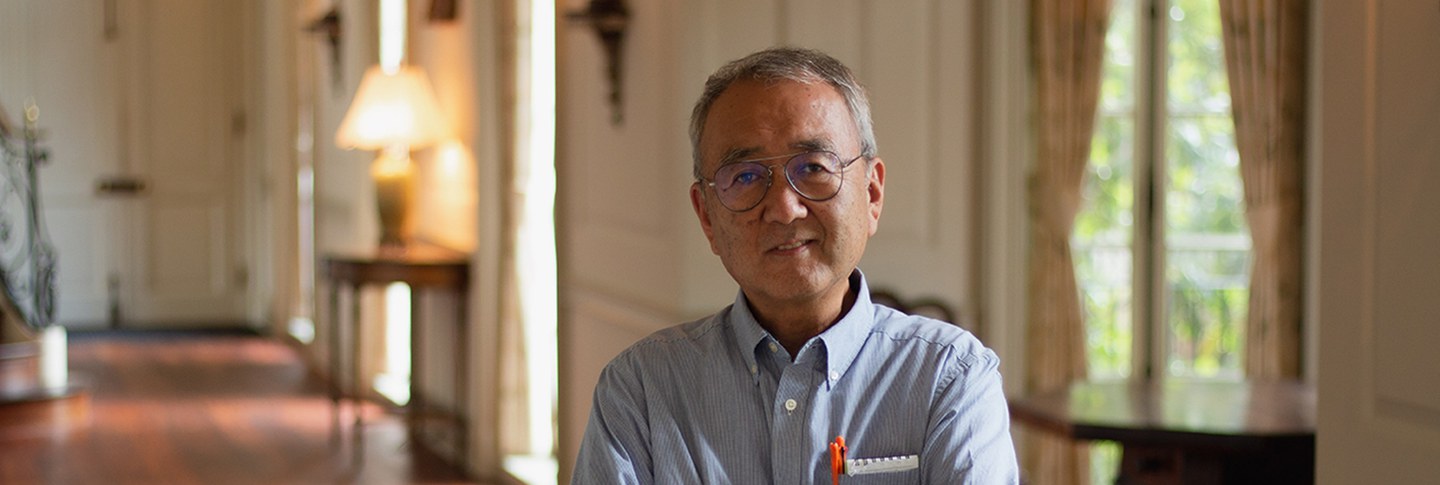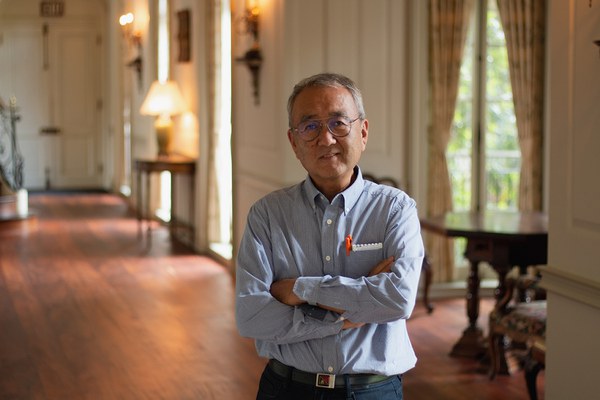Saburo Sugiyama, research professor in the School of Human Evolution and Social Change at Arizona State University, is a fellow in Pre-Columbian Studies. His research report, “Urbanism, Arts, and Polity of Ancient Teotihuacan,” revisited nearly 40 years of excavation data to better understand life in an ancient Mexican city.
Q&A with Saburo Sugiyama
What can we understand about Teotihuacan from the National Mall in Washington, DC?
We see similarities between big cities, planned cities especially: huge monumental buildings and large spaces to gather people. Think of the Chinese capital, or Red Square in Moscow. Here in Washington, DC, people can feel the sense of monumentality and huge social events like inaugurations. The distance between the US Capitol and the Washington Monument is almost the same size as the Teotihuacan central area. It’s about 2 kilometers—walking distance. Several hundred thousand people easily fit.
I think the leading people in Teotihuacan planned in advance for all these people they expected to gather. Teotihuacan was a pilgrimage center in ancient times; its earliest known monument was created about 100 CE. More than 1,000 years later, Aztecs saw the big space and monuments and called it Teotihuacan—that means in the Aztec language “city of the gods.” Because of the scale, people thought gods made the city. The site is huge and wide, and there are big monuments like the Sun Pyramid, the Moon Pyramid, the ceremonial complex we call the Citadel, which can accommodate more than 100,000 people.
How did you determine the Teotihuacan Measurement Unit (TMU), and why does it matter?
We are not dealing with a city created from a small town or village that gradually became big. Teotihuacan suddenly became a huge city. A master plan must have existed.
Teotihuacan had a kind of writing system, but it is undeciphered, and we don’t have any documents. All we have is archaeological material, which doesn’t speak for itself. So we needed to find a way to understand these symbolic meanings. Working at Teotihuacan since the 1980s, I got interested in measurement because the construction is very precise and strictly organized. For example, buildings several kilometers apart can be exactly parallel, and sometimes exactly the same size.
There must have been some kind of measurement unit to build so precisely. At the Feathered Serpent Pyramid, I accidentally found a measurement unit that can be applied to staircases, balustrades, large sculptures, or the distance between monuments. One TMU is 83.0 centimeters. The unit is based on the body, as in many ancient societies: Chinese, Japanese, European. People began measuring the outside world based on their bodies. You Americans still use “feet.” This measurement, 83 centimeters, is about half the height of an adult.
Teotihuacan people were attempting to express their worldview and system for measuring space and time in these monumental buildings. For example, one side of the Sun Pyramid is 260 TMUs: 260 days was one of the most important ritual calendars, directed to human cycles like pregnancy. The Sun Pyramid was built simultaneously with Building 4 of the Moon Pyramid, which measures 105 TMUs. If you combine 260 and 105, it becomes 365 days—the solar year. I think the Sun Pyramid and Moon Pyramid represented together the two most important cycles in Mesoamerican life.
You can feel how symbolic Teotihuacan was just seeing it, but you can’t understand what specific meaning was involved. Now with this measurement unit, I can tell.
How has new excavation data changed our understanding of Teotihuacan people?
We found sacrificial burials inside the Feathered Serpent Pyramid: more than 200 people. Before that, we really didn’t have evidence of human sacrifice other than mural paintings with knives and possibly blood. In the Moon Pyramid we found not just humans but also the most dangerous animals in the Mexican highland: pumas, wolves, rattlesnakes, more than 50 eagles. You can’t capture all those eagles in one or two days. Somewhere in Teotihuacan, there should be a zoo. I really want to excavate the zoo!
Our view of Teotihuacan dramatically changed. Previous books say that Teotihuacan was distinct from other societies—Aztec, Maya, Olmec. Now we think Teotihuacan wasn’t a pacific place. It was one of the big centers for sacrificial rituals. Warfare was very important to bring captives for sacrificing.
When we excavated, we didn’t find any royal tombs, so we concluded that these mass sacrificial burials were dedicated to the pyramid construction itself. But recently, one ancient tunnel 17 meters below ground was discovered under the Feathered Serpent Pyramid, suggesting the possibility of a royal tomb. A similar ancient tunnel was found under the Sun Pyramid in 1970. The tunnels were looted, but circumstantial data suggests that originally important people’s bodies were there. You can see the correlation of royal tombs and large monuments in other societies—for example, in Maya cities or Monte Albán. Here at Dumbarton Oaks, I’m looking at materials on subjects like royal tombs to compare with the case of Teotihuacan.
Julia Ostmann is postgraduate writing and reporting fellow at Dumbarton Oaks. Photo by Elizabeth Muñoz Huber, postgraduate digital media fellow.

